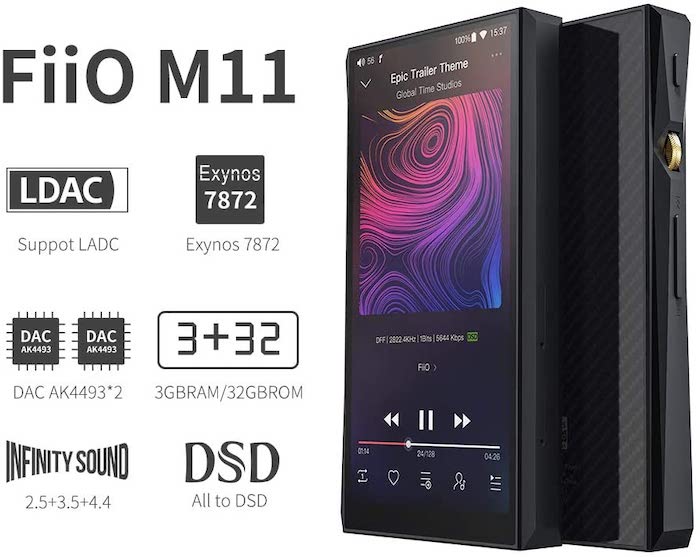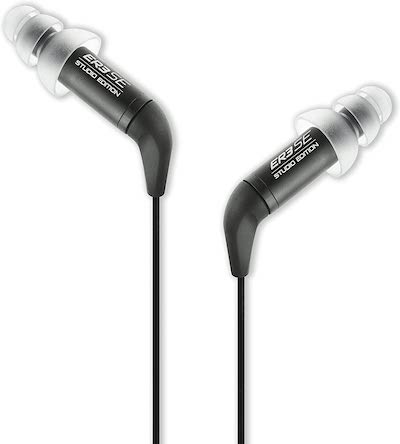Today we have my annual update about my largely-dormant audio hobby. “Audio” means the machines that make music in the home. Although I haven’t undertaken any big projects of late, nevertheless I have some expertise here that I think can be useful for those who take an interest.
This year, I have been listening to the same setup that I have described in the past, which is a Metrum Amethyst DAC going direct to a pair of volume autoformers from Intact Audio. The Metrum DAC uses an R2R “non-oversampling” convertor of some refinement, the output of which goes direct to the outputs without any intervening gain/buffer stage. So, you are getting the output directly off the chips. The output impedance of this is about 100 ohms, and the voltage is 2V rms — enough to drive high-efficiency headphones. This then goes to the autoformer for volume control and impedance matching. My headphones are the Sennheiser HD600 and Audeze LCD-2 as before. Old, but good. This is a very good setup. I also have a Schiit Asgard II amplifier, for when I want more gain, but this is used less than 10% of the time.
The new item around here these days is the Fiio M11 portable music device. This is basically a small Android tablet, with a beefed-up audio section. It runs Android streaming apps like Tidal and Qobuz, on wifi. It costs about $400 new, and I use it with the Etymotic ER3SE “in ear monitors,” about $200. You can also use the M11 with over-the-ear headphones like the Sennheiser HD600.

The M11 and ER3SE do not sound as good as my desktop setup. But, I think it sounds good enough. Music is pleasurable. It attains a basic minimum of musicality, in my estimation. Plus, it is cheap, and portable. You don’t need a desktop to hold it. You can buy this and call yourself an “audiophile.” You can enjoy exploring music with it, and not be too worried that you are missing out. Yes, you are missing out, but you aren’t missing out on much. I especially like using the M11 in my car, using the line-in jack. It is much better than the typical mp3 over Bluetooth that you get from your smartphone, even though I am using the mediocre stock car audio system. Using Qobuz, you can download highres 24/96 tracks to the device, so you don’t need a wifi connection. For a while, I tried using a smartphone with an external DAC (Fiio Q5), but this was fiddly and problematic. It has been much more convenient to have the Android/app function and DAC function in one integrated device. Plus, in the car, I am often using my smartphone for other things, such as navigation, so it is nice to have a standalone music platform. You can connect the device with USB to a computer, and use it as a DAC as well — for example, if you want to listen to high-quality audio while watching video. A lot of effort has gone into making a device that works as an audio Swiss Army Knife.

Recently, I have been itching to build speakers again. Headphones are convenient, but I remain interested in the physicality of real sound from speakers. The main problem is that I do not have a good space for speakers, where I can turn them up without concerns. This is perhaps the most important thing about a speaker system — a good space. This “good space” includes the physical location, but it also includes considerations such as: whether other people in your household want to hear your music, or the other purposes of a room, or whether your ideals of room decor can include a big audio system (and I like them big).
I have been enjoying a lot of classical music recently. For a long time, I wanted to enjoy classical music, but I couldn’t quite get into it. In the end, my path to enjoying this music was much as a friend of mine described many years ago. Take one good piece of classical music, that is easy and inviting. If you want a specific name, listen to Lara St. John’s recording of Vivaldi’s Four Seasons. I don’t know if it is just a matter of familiarity, but I like this version better than recordings of the same by Anne-Sophie Mutter, Itzak Perlman and others.
Listen to it at least five times in a row — for example, once a day for five days. If you like, do the same for a few more items. Listen to them at least five times, not necessarily in a row but within a short period of time. In this way, by becoming familiar with a single piece, you can learn the language of classical music. This year, I have expanded also to opera and ballet, which I watch on DVD, with the audio portion going through my desktop audio system via headphones. If you are interested in opera, one good introduction is this collection of 16 major operas, by Britain’s Royal Opera, from Opus Arte. They also have a ballet collection.
In audio, much as with camera geeks, there tend to be gearheads, and music lovers. I’ve done both. The gearheads are always fiddling with the possibilities of the physical properties of these electromechanical devices. The music lovers also want something that is special — they don’t want to listen to mass-market consumer junk — but they mostly want something that is good enough, so that they can stop fiddling with gear and direct their attention to exploring different kinds of music, with the heightened pleasure and involvement that a good system provides. You can go back and forth between these poles, in a productive way. What was once good enough later seems limited; and thus begins a new cycle of gear geekery and experimentation. The little shoebox speakers give way to a big horn system. But, in general, the music lovers are the final winners.
You can get a heck of a lot of value in audio these days, for not much money. If you like listening to music but have no experience with ambitious audio devices, get the Fiio M11 and some good headphones, and try it for at least a year. Later, you might find something you like better. Or, just stick with it. It is good enough.

